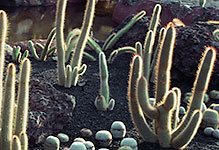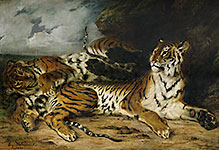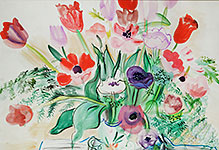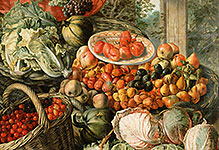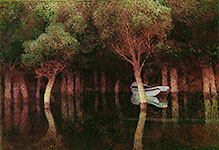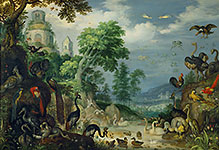
Nature
Plants and flowers. More - trees, fruits, animals etc. - to be added soon!
![A basket of flowers, Ding family of the Jinchang pavillion, Suzhou, 1690. The inscription on this print identifies the Ding family as coming from [near] the Jinchang pavillion. The Jinchang pavillion was near the Chang gate, in north-western Suzhou. This is the area where the district of Taohuawu was located, which had many hundreds of print workshops in the early Qing dynasty. Each print is of an auspicious subject accompanied by a verse which is a pun on the motifs depicted.The basket is an attribute of Lan Caihe, one of the Eight Immortals. It represented a receptacle of riches and was a motif which was often used to evoke harmony. In this case, it comes with the wish that one's luck would be as fragrant and as plentiful as the flowers in the basket. The magnolia, wild apple and peony are all symbols of spring, and so this print would presumably have been used during the Chinese New Year. When the magnolia and wild apple are depicted together, it means, 'May your halls be rich and honoured'. The peony was also known as fugui hua, the flower of riches and honour.
OA, 1906.11-28.3](https://archive.lessingimages.com/photo/34330/thumb)
#03070238
A basket of flowers, Ding family of the Jinchang pavillion, Suzhou, 1690. The in...

#03070239
Jade rhyton, Chinese, Qing dynasty, 18th-19th century. This cup takes the tradit...

#03070248
Monkeys Hanging scroll, silk embroidery. Song Dynasty, China; 10th century CE.

#03070249
Country doctor applying a painful cure of moxibustion (traditional Chinese medic...

#03070250
On the River at Qing Ming Festival. This painting is considered one of the most...

#030703 4
Tomoe Gozen on horseback. She was one of the few examples of a true female warri...

#030703 5
Hideyoshi Toyotomi (1536-1598), a Japanese feudal lord and samurai (Japanese war...

#03070310
The Namamugi Incident was a samurai attack on foreign nationals in Japan on Sept...

#03070318
White eagle. Embroidery on silk. China; Song dynasty.

#03070322
Prancing horse. Rubbing from a tomb. China; Han dynasty, 206 BCE - 220 CE.

#03070323
Nobleman accompanied by his squire (fragment from a scene with the life of Buddh...

#03070324
Emperor Tang Xuanzong (685-762) watching his fafourite concubine Yang Guifei mou...
